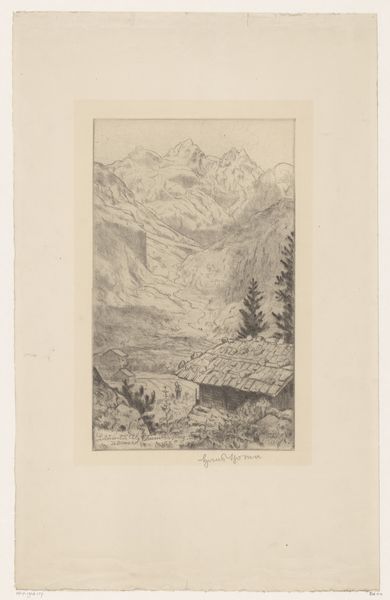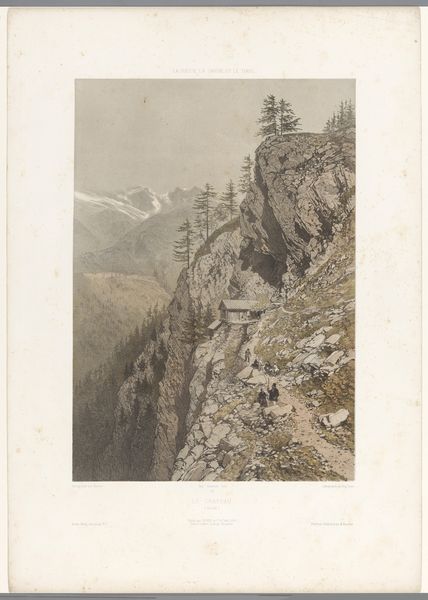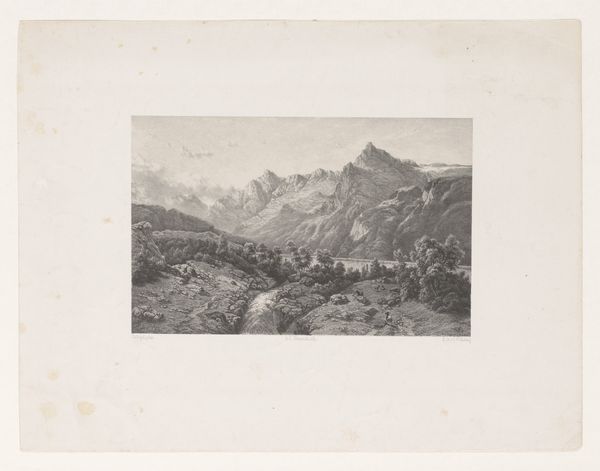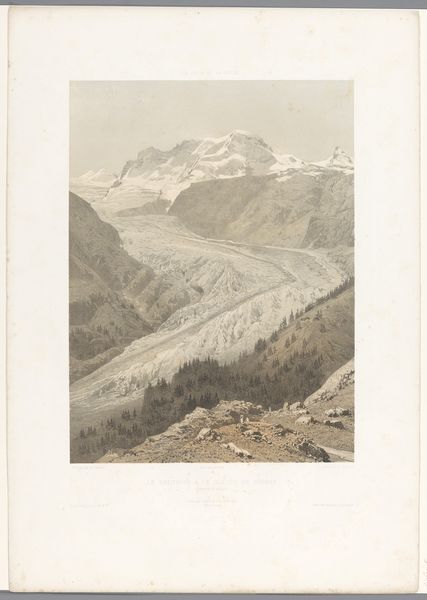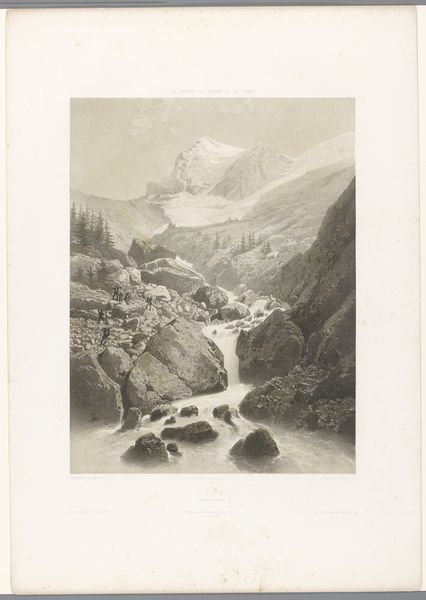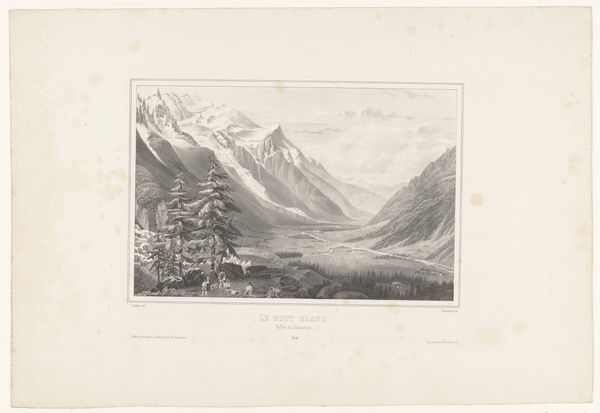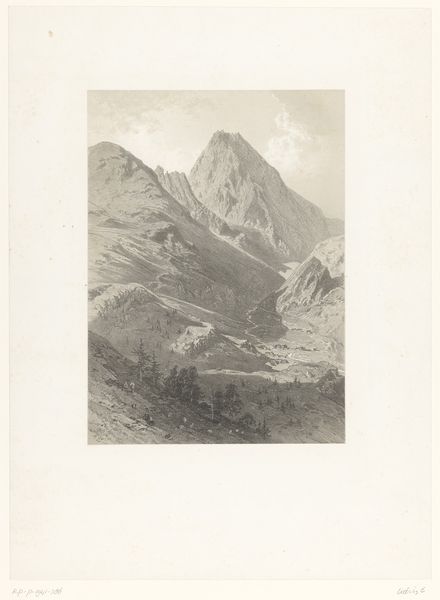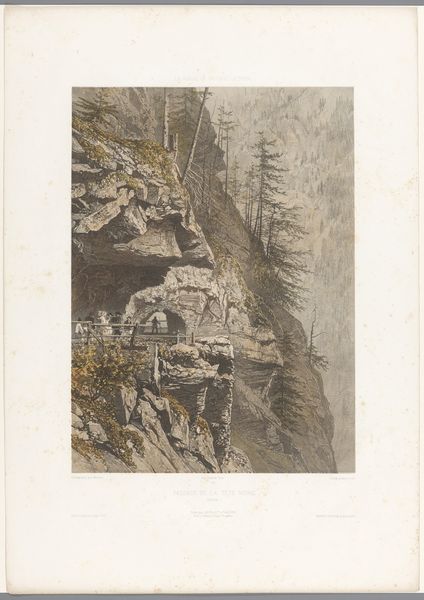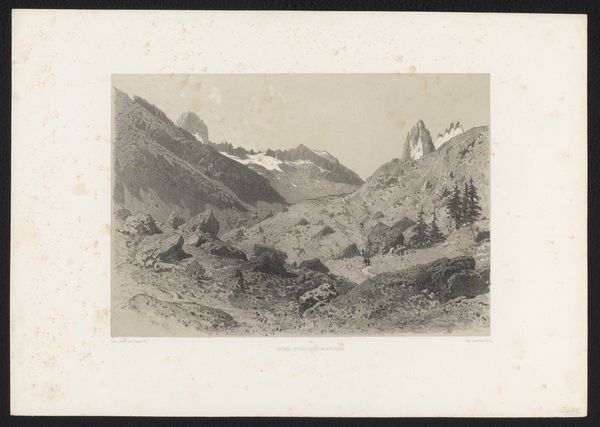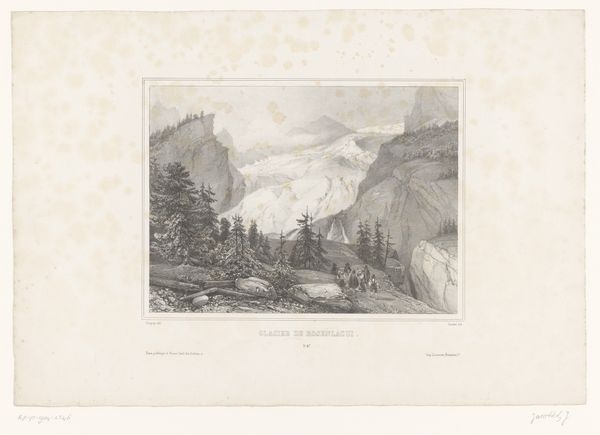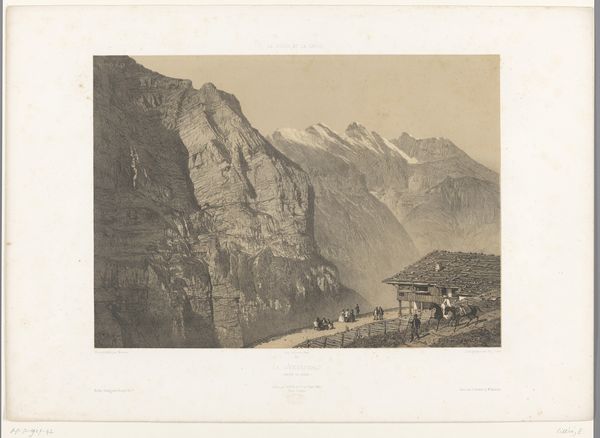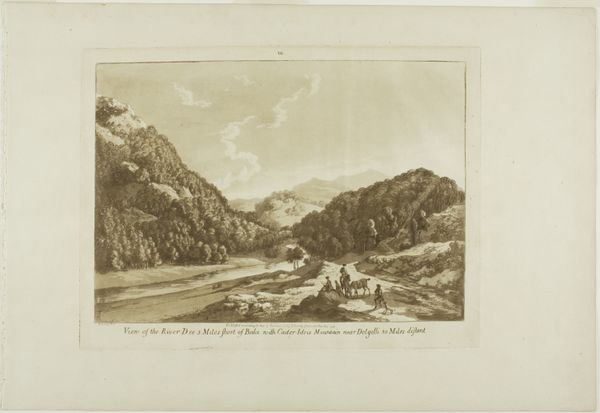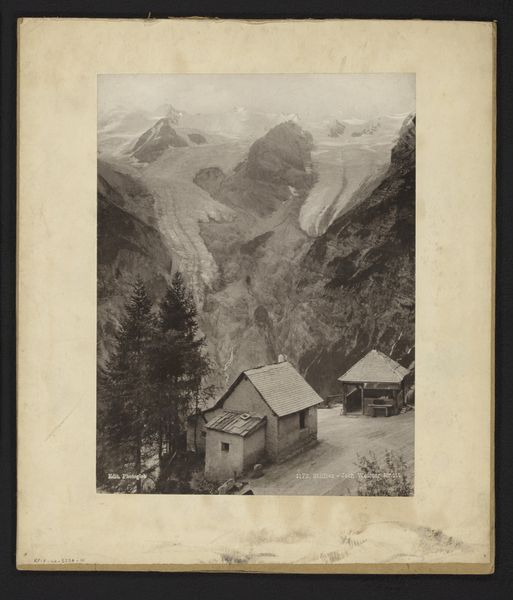
Dimensions: height 243 mm, width 175 mm
Copyright: Rijks Museum: Open Domain
Curator: Immediately, I am struck by its monochromatic formality, all those carefully rendered lines. The contrast lends it a stark beauty. Editor: And yet within that strict visual field lies an entire narrative world. What appears to be the Pianazzo Waterfall, an engraving realized by Heinrich Siegfried sometime between 1824 and 1889. Water, mountains, the presence of civilization... All potent symbols. Curator: Civilization seems to dominate here. Look at how the winding road, with its tunnels carved into the cliff, almost tames the wildness. Even the viewing platform with its quaint fence suggests control, a stage from which to view the sublime. Editor: Indeed. The Romantic gaze preferred nature at a safe distance. Consider the horse-drawn carriage at the lower right and the figures who observe the waterfall, both elements suggest an audience, mediating our own experience through theirs. The waterfall becomes a spectacle for a bourgeois encounter with nature. It is almost like we are re-enacting the gaze from that historical time. Curator: Precisely! But that perspective is cleverly orchestrated through a clear structure, almost architectural in its clarity. Notice how Siegfried employs contrasting tones—dark and light, dense and sparse—to direct our eyes through the landscape? The composition guides us from the viewing platform upward to the cascading water, further into the misty distance beyond the highest mountains. Editor: The waterfall becomes more than just water; it represents untamed power and a threshold to something deeper, a primal, unconscious memory. Think about how water is such a potent archetype found in countless cultures. Curator: Archetypes, precisely. Water connects, erodes, sustains. And here, carefully framed, its primal energy is on display for leisurely contemplation. A fitting symbol, indeed, for the Romantics' fascination with the intersection of civilization and nature. Editor: Yes, the experience offers insights into the construction of an idea as much as it documents a geological phenomenon. So much weight rests within this small engraving. Curator: It certainly does—revealing as much about how we view the world as about what we see.
Comments
No comments
Be the first to comment and join the conversation on the ultimate creative platform.
